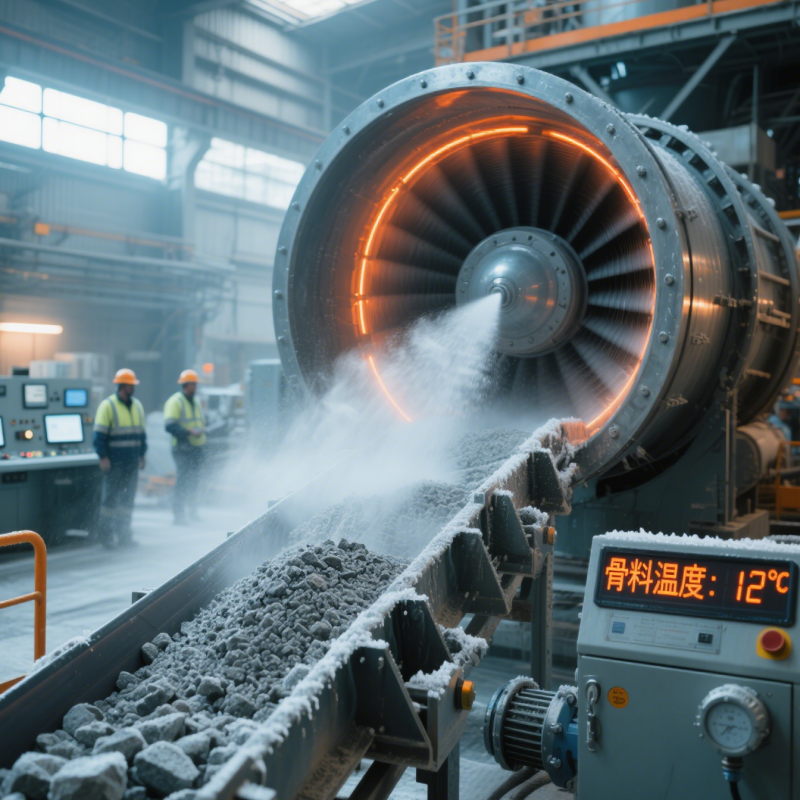
search
Concrete is the cornerstone of modern construction, used in building everything from roads and bridges to skyscrapers and dams. Yet, the success of any concrete project hinges on one often-overlooked aspect: temperature control. Without proper regulation of material temperatures, especially during mixing and curing, the quality of the concrete can suffer, leading to durability issues and structural failure.
That's where an aggregate cooling system comes in. These systems help to regulate and lower the temperature of concrete aggregates (like sand, gravel, or crushed stone), ensuring that the final concrete mix performs at its best. But how exactly does an aggregate cooling system work? Let's dive in to explore the process, components, and crucial benefits of this innovative technology.
Before we dig into the mechanics of an aggregate cooling system, it's important to understand why cooling aggregates matters. Producing concrete in high temperatures, especially in hot climates or during summer, poses significant challenges:
Cracking Risks: Elevated temperatures rapidly accelerate the hydration process, leading to thermal and plastic shrinkage cracking.
Loss of Strength: Improper temperature management can compromise the compressive strength of the concrete.
Quality Reduction: High temperatures reduce workability, making the concrete harder to pour and finish.
In such scenarios, aggregate cooling systems play a pivotal role by ensuring the aggregates maintain an ideal temperature before they are mixed with water and cement. This simple yet effective solution is the backbone of high-performance concrete production.

To understand how an aggregate cooling system works, we first need to explore its primary components, each of which plays a key role in the process.
Chilled Water or Air Cooling Units
These units supply cold air, chilled water, or both to regulate the temperature of the aggregates. Advanced systems often use heat exchangers to optimize efficiency.
Insulated Silos or Tanks
Cooled aggregates are stored in insulated silos to prevent heat transfer from ambient temperatures. This ensures the materials retain their low temperature until they are ready for use.
Monitoring and Automation
Modern cooling systems are equipped with IoT sensors and automated controls that adjust cooling levels in real time. This eliminates guesswork and optimizes cooling efficiency.
Distribution Systems
Transport mechanisms ensure the cooled aggregates flow seamlessly from storage to the batching plant.
Understanding these components lays the foundation for grasping how the system operates.
Now, let’s walk through the process of an aggregate cooling system to see how all the components come together:
The process begins with the collection of raw materials like gravel, crushed stone, or sand. These aggregates are stored in bulk and prepared for the cooling process.
Depending on the system in place, aggregates are cooled using one or more methods:
Chilled Water Cooling: Cold water is sprayed, flooded, or circulated through the aggregate. The water absorbs the heat from the material, lowering its temperature quickly and efficiently.
Air-Cooling Systems: Forced air or refrigerated air units blow cooled air over the aggregate to achieve the desired temperature.
Hybrid Cooling: Combining both air and water cooling for maximum performance.
Once cooled, the aggregates are stored in insulated silos or tanks. These storage units maintain the low temperature and prevent re-heating due to environmental exposure.
Finally, the cooled aggregates are distributed to the batching plant, where they are mixed with cement and water to create concrete. By maintaining the batch temperature within optimal ranges, the resulting concrete achieves superior quality, workability, and durability.
There’s no one-size-fits-all when it comes to aggregate cooling. Different methods are used depending on the scale of the project, climate, and desired efficiency.
Most widely used method.
Chilled water is sprayed directly onto the aggregates or circulated through cooling channels.
Works well for moderate temperature reduction needs.
Blows refrigerated or forced air over aggregates.
Ideal for dry climates or situations where water may be scarce.
Combines chilled water and air cooling for maximum efficiency.
Best for large-scale projects or environments with extremely high temperatures.
Selecting the right system is critical for achieving optimal results and minimizing costs.
Aggregate cooling systems are indispensable in several high-stakes applications:
Desert Mega Projects: Infrastructure projects in scorching heat, such as airports, highways, and residential developments in the Middle East and North Africa.
Large-Scale Concrete Pours: Dams, bridges, and other mass pour projects that require temperature-controlled concrete to prevent cracking.
Precast Concrete Production: Factories manufacturing concrete slabs, beams, and panels require precise cooling to ensure consistency and durability.
Integrating an aggregate cooling system into your concrete production process has undeniable benefits:
By controlling temperature, the concrete achieves better strength, reduced cracking, and a smoother surface finish.
Compared to traditional cooling like adding ice to the mix, these systems are far more energy-efficient and environmentally friendly.
Adheres to global standards like ASTM C1064 for concrete temperature during production.
While there may be an upfront investment, reducing waste, cracking risks, and inefficiencies leads to significant cost savings over time.
When investing in an aggregate cooling system, selecting the right partner is paramount. This is why FSE is the preferred choice for many in the industry:
Tailor-Made Solutions: FSE designs systems based on the specific needs of your facility, ensuring optimum efficiency.
State-of-the-Art Technology: FSE incorporates the latest technology to deliver energy-efficient and high-performance cooling solutions.
Global Expertise: With experience across various industries and climates, FSE understands the challenges of concrete production and provides solutions designed for success.
Comprehensive Support: From installation to maintenance, FSE is with you every step of the way.
When quality, durability, and precision matter, FSE is the partner you can rely on to take your production to the next level.